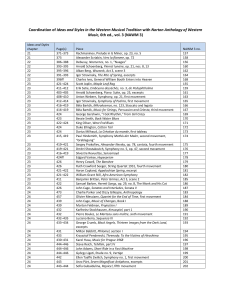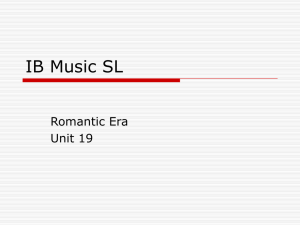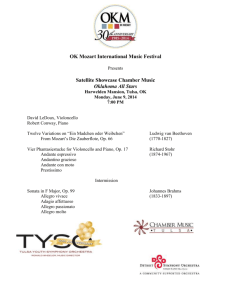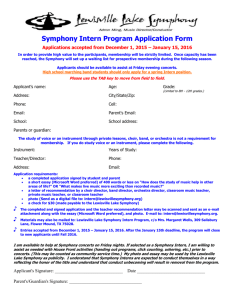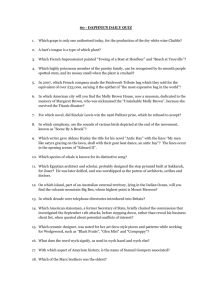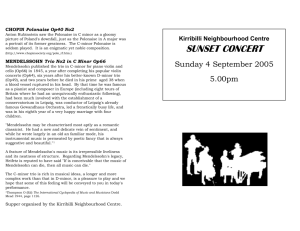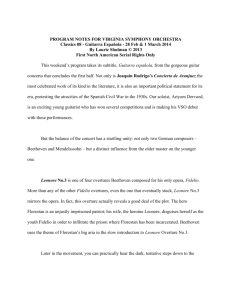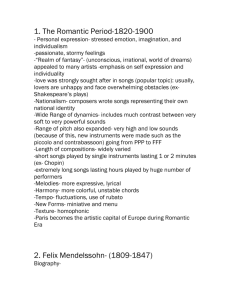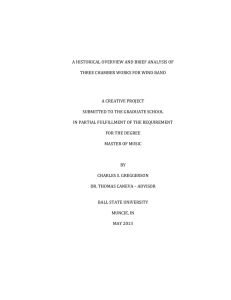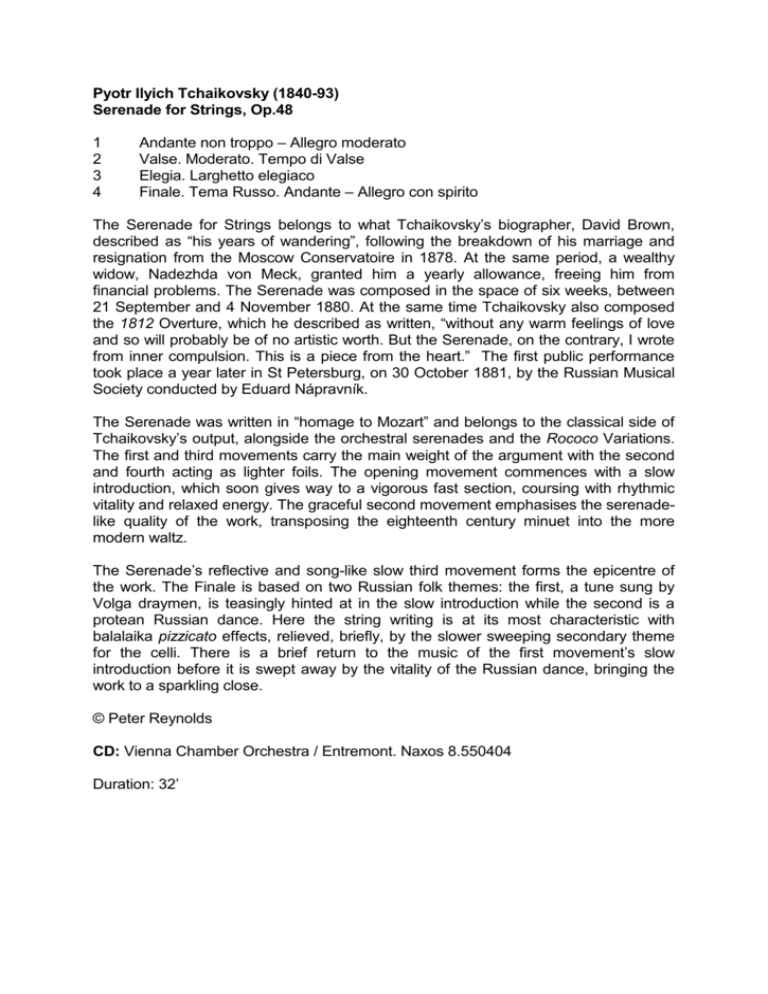
Pyotr Ilyich Tchaikovsky (1840-93)
Serenade for Strings, Op.48
1
2
3
4
Andante non troppo – Allegro moderato
Valse. Moderato. Tempo di Valse
Elegia. Larghetto elegiaco
Finale. Tema Russo. Andante – Allegro con spirito
The Serenade for Strings belongs to what Tchaikovsky’s biographer, David Brown,
described as “his years of wandering”, following the breakdown of his marriage and
resignation from the Moscow Conservatoire in 1878. At the same period, a wealthy
widow, Nadezhda von Meck, granted him a yearly allowance, freeing him from
financial problems. The Serenade was composed in the space of six weeks, between
21 September and 4 November 1880. At the same time Tchaikovsky also composed
the 1812 Overture, which he described as written, “without any warm feelings of love
and so will probably be of no artistic worth. But the Serenade, on the contrary, I wrote
from inner compulsion. This is a piece from the heart.” The first public performance
took place a year later in St Petersburg, on 30 October 1881, by the Russian Musical
Society conducted by Eduard Nápravník.
The Serenade was written in “homage to Mozart” and belongs to the classical side of
Tchaikovsky’s output, alongside the orchestral serenades and the Rococo Variations.
The first and third movements carry the main weight of the argument with the second
and fourth acting as lighter foils. The opening movement commences with a slow
introduction, which soon gives way to a vigorous fast section, coursing with rhythmic
vitality and relaxed energy. The graceful second movement emphasises the serenadelike quality of the work, transposing the eighteenth century minuet into the more
modern waltz.
The Serenade’s reflective and song-like slow third movement forms the epicentre of
the work. The Finale is based on two Russian folk themes: the first, a tune sung by
Volga draymen, is teasingly hinted at in the slow introduction while the second is a
protean Russian dance. Here the string writing is at its most characteristic with
balalaika pizzicato effects, relieved, briefly, by the slower sweeping secondary theme
for the celli. There is a brief return to the music of the first movement’s slow
introduction before it is swept away by the vitality of the Russian dance, bringing the
work to a sparkling close.
© Peter Reynolds
CD: Vienna Chamber Orchestra / Entremont. Naxos 8.550404
Duration: 32’
Felix Mendelssohn (1809-47)
Symphony No.3 in A minor, Op.56 (Scottish)
1
2
3
4
Andante con moto - Allegro un poco agitato Vivace no troppo Adagio Allegro vivacissimo - Allegro maestoso assai
The interest in Scotland, and all things Scottish, dates from the eighteenth century.
Until then it was considered a remote country but, with the Act of Union in 1707,
Scotland, although losing its independence, came into its own as an economic and
cultural force and also as a popular tourist destination. When the twenty year-old
Mendelssohn visited Britain in summer 1829, he headed for the Highlands where, "the
bagpipes and the echoes are said to be quite extraordinary." Like a good romantic,
Mendelssohn was awed by the wildness of Scotland writing, "When God Himself takes
to panorama-painting the result is strangely beautiful ... Everything here looks so stern
and robust, half-enveloped in haze or fog."
The most celebrated memento of Mendelssohn's visit is the overture, Fingal's Cave,
but he also made sketches for a symphony. This took longer to complete and was not
premiered until 3 March 1842 when Mendelssohn himself conducted it in Leipzig. By
this time he was the most successful and highly regarded musician of his age and the
symphony was dedicated to the young twenty-three year-old Queen Victoria. Her
recent marriage to her cousin, Prince Albert of Saxe-Coburg, his admiration of
Mendelssohn and their espousal of all things Scottish made the dedication a timely
one.
The symphony’s four movements follow one another without a break. The gravely
beautiful slow introduction came to Mendelssohn whilst visiting the ruins of Holyrood
Palace in Edinburgh: "The chapel ... has now lost its roof, it is overgrown with grass
and ivy growing on it and at the broken alter Mary was crowned Queen of Scots ... I
believe I found today in that old chapel the beginning of my Scottish Symphony." A
faster lilting theme follows and the movement is lyrical and stormy by turn.
The second movement is a fleet and nimble scherzo evoking the keen breezes and
views over the sea, its textures as light and strong as silk. The slow third movement
connects to the wistful melancholy mood that opened the work, rising to a magisterial
climax before returning to the initial mood.
The last movement moves forward with an irresistible sense of speed, hurtling towards
a stormy climax. The music now subsides, preparing for the introduction of the
symphony's grand apotheosis: a formal Highland gathering, or as Mendelssohn
described it, "the men with their long red beards, tartan plaids, bonnets and plumes,
bare knees and their bagpipes in their hands." Whatever the inspiration, it brings the
symphony to a fine and uplifting conclusion.
© Peter Reynolds
CD: San Francisco Symphony Orchestra / Blomstedt. Decca 433 811-2DH (with
Mendelssohn's Italian Symphony)
Duration: 38'
© Peter Reynolds
All rights reserved. No part of these texts may be reprinted or reproduced or utilised in any form or by any electronic, mechanical,
or other means, now known or hereafter invented, including photocopying and recording, or in any information storage or retrieval
system, without prior permission in writing from the author.



